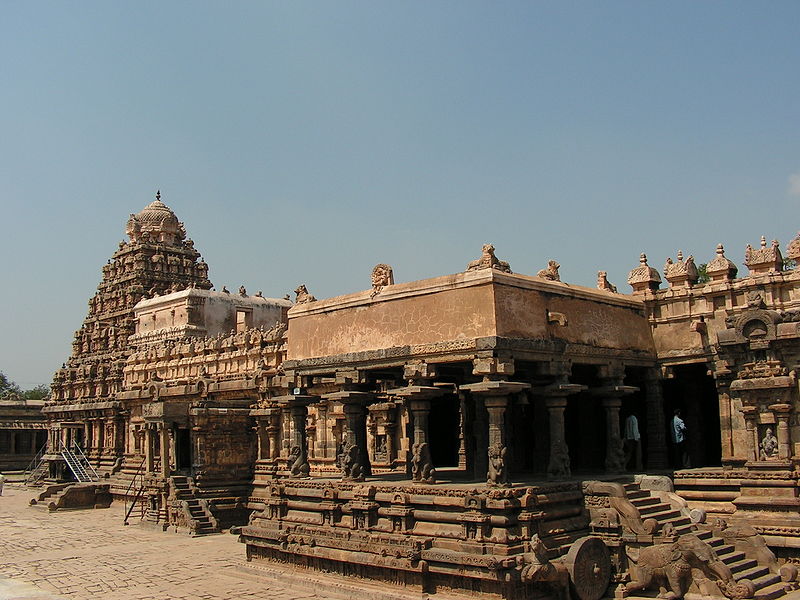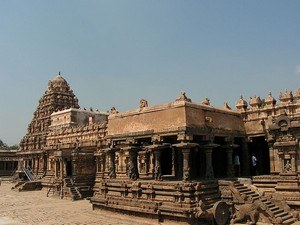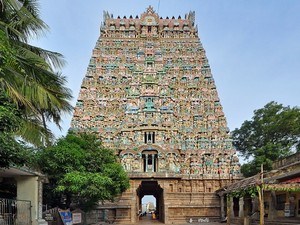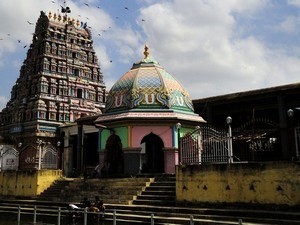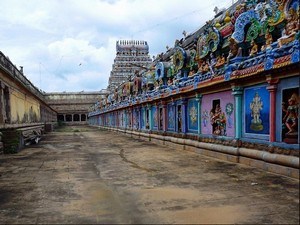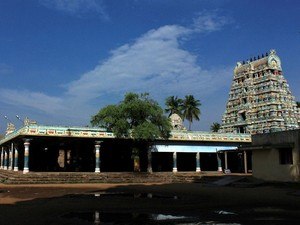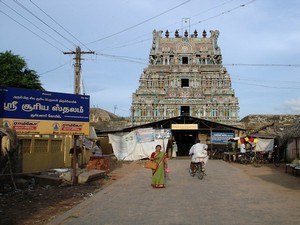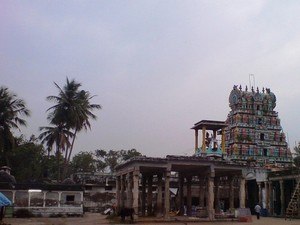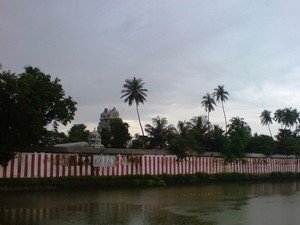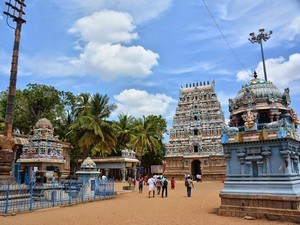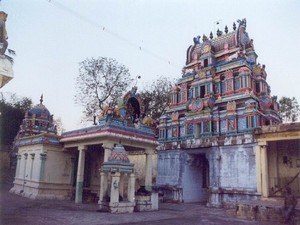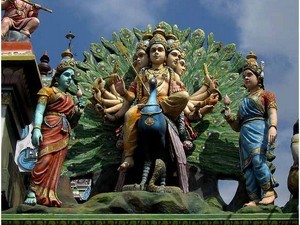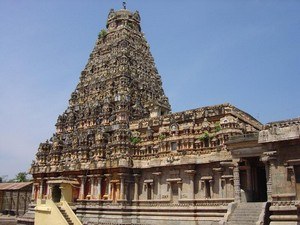Darasuram Airavatheswar Temple, Kumbakonam - Timings, History, Architecture, Best Time to Visit
Photo Credit: Flickr
 India | TamilNadu | Kumbakonam
India | TamilNadu | Kumbakonam
 #2 of 30 Places to Visit in Kumbakonam
#2 of 30 Places to Visit in Kumbakonam
 Distance (From Kumbakonam): 8 Kms
Distance (From Kumbakonam): 8 Kms
 Trip Duration (Including Travel): 1-2 Hours
Trip Duration (Including Travel): 1-2 Hours
 Place Location: 8 Kms From Kumbakonam
Place Location: 8 Kms From Kumbakonam
 Transportation Options: Bus / Cab
Transportation Options: Bus / Cab
 Travel Tips: Kumbakonam (8 Kms) can be visited along with this place
Travel Tips: Kumbakonam (8 Kms) can be visited along with this place
About Darasuram Airavatheswar Temple
At a distance of 8 Km from Kumbakonam, and 34 Km from Thanjavur, Airavatheswar Temple is an ancient Hindu temple located at Darasuram town near Kumbakonam in Tamil Nadu. It is one of the popular heritage sites in Tamil Nadu, and among the best places to visit as part of Kumbakonam tour. Dedicated to Lord Shiva, the Airavatesvara Temple in Darasuram is designated as a UNESCO World Heritage Site, alongside the Brihadeeswara Temple in Thanjavur and the Gangaikondacholisvaram Temple in Gangaikonda Cholapuram, collectively known as the Great Living Chola Temples. It is part of a group of 18 significant medieval Hindu temples in the Kumbakonam region. The temple also honors the traditions of Vaishnavism and Shaktism within Hinduism, along with the narratives associated with the Nayanmars of Shaivism.
History of Darasuram Airavatheswar Temple
Popularly called as Darasuram Temple, the Airavatesvara Temple was constructed in the 12th century CE by Chola King Rajaraja Chola II and is a part of Ayirattali, the secondary capital of the Chola dynasty. Renowned for its stunning stone carvings and elaborate architecture, the Airavatesvara Temple exemplifies the engineering excellence of the Chola dynasty. Approximately 20 inscriptions from later Chola rulers, the Pandyas, and the Vijayanagara Empire document various donations and endowments made to this temple.
Historically, the Airavatesvara Temple was much more expansive than it is today, featuring seven streets and seven courts, similar to the Srirangam temple, as indicated by the inscriptions. Currently, only one court housing the main temple remains, while the others have disappeared. Remnants of a gopuram and additional structures located some distance from the present visitor area suggest that the site suffered significant damage at some point. The exact causes of this destruction remain uncertain, but it may have been linked to invasions of the capital by the Delhi Sultanate's forces, led by the Muslim commander Malik Kafur in 1311, followed by Khusrau Khan in 1314 and Muhammad bin Tughlaq in 1327. The Vijayanagara Empire triumphed over the Madurai Sultanate in 1378, after which this temple, along with other Chola-era temples, came under the control of Hindu rulers who undertook repairs and restorations. Since 1954, the temple has been managed by the Archaeological Survey of India and was designated a UNESCO World Heritage Site in 2004.
Mythology of Darasuram Airavatheswar Temple
According to legend, Airavata, the white elephant of Indra, worshipped Lord Siva in this temple. As per the mythology, Airavata was cursed by sage Durvasa for disrespected the hermit. The curse went on to discolor the pearly white skin of the elephant. Airavat got his color back by taking a dip in the water tank of this Lord Shiva's Temple. That is how the temple got its name. This story is also carved in stone in the inner chambers of the shrine.
Architecture of Darasuram Airavatheswar Temple
Airavatesvara Temple is one of the four expansive temples built by the Cholas entirely on stone Vimanas with the other three located in Thanjavur built by Rajaraja I, Gangaikonda Cholapuram built by Rajendra I, and Tribuvanam by Kulottunga II. This temple is categorized as a Karak Koil, as its design is inspired by chariots, which were traditionally used in festival processions. The temple features a square layout and is surrounded by a compound wall, which includes a Nandi mandapa and a dwajastambha positioned outside the enclosure. The main temple itself sits on a plinth, and consists of the garbhagriha, and three mandapas namely ardha-mandapa, mukha-mandapa and agra-mandapa.
The garbhagriha, or inner sanctum, is square-shaped with robust walls, and the vimana superstructure rises directly above its center. Unlike other temples, the circumambulatory path is not located around the sanctum but rather encircles the courtyard. The garbhagriha connects to the mukha-mandapa via the ardha-mandapa, which is supported by pillars and flanked by two imposing dwarapalas. The maha-mandapa is rectangular, featuring six rows of pillars (a total of forty-eight) adorned with reliefs and intricate carvings. To the east of the maha-mandapa lies the agra-mandapa, also known as the Rajagambhiran-tiru-mandapam in honor of the king. This hall is designed to resemble a chariot, complete with stone carvings of wheels and horses, echoing the architectural style of the Nritta-sabha at the Chidambaram Temple and the Konark Sun Temple in Odisha. The chariot hall is equipped with elaborately carved steps that extend from east to west, which are said to produce melodious sounds when walked upon, earning them the name 'singing steps.'
Adjacent to the Airavateshwarar temple is the Periya Nayaki Amman temple. The Darasuram Temple also features smaller shrines dedicated to various Vedic and Puranic deities, including Indra, Agni, Varuna, Vayu, Brahma, Surya, Vishnu, Saptamtrikas, Durga, Saraswati, Lakshmi, Ganga, Yamuna, Subrahmanya, Ganesha, Kama, Rati, and others. Many sculptures from this temple like the full set of Bhikshatana with rishi patnis in various moods are now preserved in the Thanjavur Art Gallery.
Festivals of Darasuram Airavatheswar Temple
The Airavatheswar Temple in Darasuram hosts numerous festivals annually, with the Maha Shivaratri festival in February/March being one of the most significant. This event is marked by immense enthusiasm and dedication from worshippers who travel from various locations to participate. The celebration features special rituals, prayers, and cultural performances within the temple grounds, fostering a lively and spiritual environment.
Darasuram Airavatheswar Temple Dress Code & Other Restrictions
There is no specific dress code to visit Darasuram Temple but it is suggested to dress up modestly and avoid modern clothes like mini-skirts, low-waist jeans, shorts, and even sleeveless tops while visiting the temple premises.
Non-Hindus are allowed to visit the temple complex and admire the architecture but may not be permitted inside the sanctum sanctorum.
Darasuram Airavatheswar Temple Timings
Monday: 8 AM - 12:30 PM & 4 PM - 8 PM
Tuesday: 8 AM - 12:30 PM & 4 PM - 8 PM
Wednesday: 8 AM - 12:30 PM & 4 PM - 8 PM
Thursday: 8 AM - 12:30 PM & 4 PM - 8 PM
Friday: 8 AM - 12:30 PM & 4 PM - 8 PM
Saturday: 8 AM - 12:30 PM & 4 PM - 8 PM
Sunday: 8 AM - 12:30 PM & 4 PM - 8 PM
Darasuram Airavatheswar Temple Entry Fee
General Entry is Free
Guide is available for Rs. 400
Best Time to Visit Darasuram Airavatheswar Temple
The best time to visit the Airavatheswar Temple is during the winter months from October to March, when the weather pleasant and more suitable for sightseeing. Additionally, the temple organizes a variety of festivals throughout the year, with the Maha Shivaratri festival standing out as one of the most significant occasions for a visit.
How to Reach Darasuram Airavatheswar Temple
The Airavatheswar Temple is situated merely 8 kilometers from Kumbakonam, and 34 km from Thanjavur. Visitors can utilize bus services, hire a car, or take an auto-rickshaw to access the temple from these locations. Kumbakonam is efficiently connected to various cities in Tamil Nadu through both road and rail networks. The nearest airport is Trichy International Airport, about 97 kilometers away which offers flights to both domestic and international destinations. Travelers arriving at Trichy can opt for a taxi or a bus to reach Darasuram.



